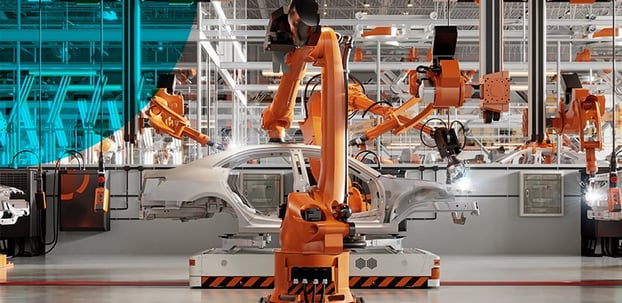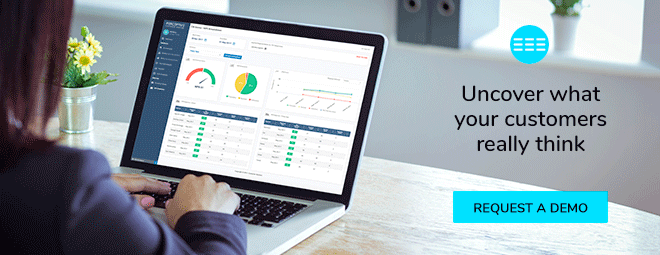Digital transformation, martech, cloud computing, IoT: these words are rapidly becoming part of the everyday business vernacular. With the pandemic accelerating the rate of digitisation, digital adoption and transformation by as much as six years, let’s look at the technologies businesses are investing in to enhance their customer experiences and fuel their brand.
Related content: Smarter Not Harder: Empower Your Business With Martech
Emerging technology
According to Accenture, emerging technologies such as blockchain, extended reality, 3D printing, and robotics saw the biggest increase in adoption from 2019 to 2021.
Blockchain is most commonly associated with FinTech and cryptocurrency, however, it is also helping businesses manage their IP, security, supply chains and audits. This technology’s ability to securely record data and the ownership of assets is playing a major role in preventing fraud, identity theft, and piracy as well as helping organisations track and securely share data both internally and externally. As such, businesses are becoming more efficient, less vulnerable to security threats, and able to verify the authenticity of their products and intellectual property, be it medicine, retails goods or digital entertainment.
Extended reality (also known as XR), is a mix of virtual reality (VR) and augmented reality (AR), is not just empowering the creative industries, but also blurring the lines between the real and unreal. For example, Mercedes and Unity’s Real or Rendered campaign asked viewers whether they could tell if a one-minute TVC had used real cars or rendered ones. (Spoiler: You can’t). This technology is becoming in-built into some of martech’s foundational programmes, such as Adobe, while in other cases they are being adopted as individual martech apps. The result: this technology helping creatives, data scientists, researchers and marketers enhance and rapidly speed up the work they do.
3D printing is allowing businesses to ideate and prototype at phenomenal speeds, particularly in the automotive industry. For manufacturers, its speeding up production and creating stronger parts and products. Meanwhile in healthcare, 3D printing is enabling custom-tailored prosthetics, hearing aids and dentistry products for patients.
Robotics is a rapidly growing field that reached an ‘all time high’ in 2021 with over half a million robots installed in factories over the year, according to the International Federation of Robotics World Robotics Report 2022. In the same year, the sale of service robots also saw a 37 per cent jump.[1]
Covid-19 has had a major role to play in the rising adoption of robotics[2] thanks to the numerous limitations and heightened requirements the pandemic has caused, such as staff shortages, limited social interaction, and increased sanitising and cleaning requirements. From driverless deliveries to production assembly lines, robotic are already helping to harvest crops, milk cows, manufacture cars, deliver tourism and hospitality experiences, and disinfect hospitals, these robots fast becoming an essential part of many workplaces.
Whether its augmenting production lines, creating stunning data visualisations, printing customised parts, extending reality or imbedding greater security this tech has the power to not just wow a customer or client. It is helping to simplify tasks, impart better understanding and insights, provide better record keeping, and increase efficiency.
No surprise forward-thinking businesses are jumping on them.
IT infrastructure and cloud computing
Infrastructure is steadily being decentralised. Businesses are moving to the cloud to avoid the time consuming and costly upkeep of physical infrastructure and systems. This area has seen the second highest adoption rate since 2019 according to Accenture. Here are a few notable items businesses are investing heavily in.
DevSecOps
DevSecOps stands for development, security and operations. Unfortunately, the pandemic saw a significant rise in cyber security incidents with McAfee Enterprise and FireEye reporting 81 per cent of global businesses had experienced an increase in cyber threats in 2021[3]. This has pushed businesses to bring their IT security, development teams and operations into a closer and more agile alignment to better combat this rise. From automation to decrease risk to creating shared platforms and collaborative ways of working across security, development and operations teams, DevSecOps has fast become a major priority for businesses around the world. And while it is not a particularly glamourous part of a business’s customer experience offering, it is essential. DevSecOps helps keep customer data safe, and potentially save you from an embarrassing data breach.
Serverless/cloud computing
With businesses shifting to cloud computing providers, developers no longer need to worry about the infrastructure and maintenance of a physical server. Instead, their cloud provider manages all that for them, freeing up their time to focus on coding and functionality of their apps. It also much more cost effective as you’re only paying for what you need, can easily be scaled up or down as required.
Infrastructure as a Service (IaaS) – essentially these services outsource your computing infrastructure needs in a pay-what-you-use model. No on-site servers, no maintenance to upkeep or risk of hardware failure. Microsoft Azure is a good example of an IaaS provider.
Platform as a Service (PaaS) – a type of cloud computing service used by developers to provide a cloud environment for them to build, test, deploy, update, and manage software. Rather than having to buy and manage the infrastructure required for this, such as managing multiple software licenses, databases, and business intelligence tools—an PaaS provider handles all this, allowing developers to focus solely on app and software development. Google App Engine and Heroku are two examples of a PaaS providers.
Software as a service (SaaS) – SaaS providers usually run on a subscription model and allows users to access its software via a web browser. Gmail and Salesforce are two well-known SaaS providers, as is Perceptive’s own Customer Monitor.
Function as a Service (FaaS) – as the name suggests, these provide the functions developers need to build, manage, and run applications without a physical server, operating system, or web server hosting. Amazon Lambda and Google Cloud Functions are both FaaS companies.
AI and automation
From real-time AI chatbots to automated predictive analytics that can uncover trends in big data, AI and automation is fast becoming part of the everyday business landscape. At the root of much of it is machine learning and deep learning.
Machine learning versus deep learning
While the two are similar, machine learning is designed with specific algorithms to execute a task. Think of it like a recipe for baking a cake. Machine learning simply follows the instructions to get the result. Deep learning, on the other hand, is more complex and with its algorithms modelled off the human brain, it can teach itself how to complete a task. To use the cake analogy again, it’s like telling the AI the end result you want (i.e. a cake) but not give the machine the recipe. Instead, you let it learn on its own the best method to produce the desired result.
This technology is a critical component behind creating tailored customer experiences. When you see “You may also like” and “Customers also brought” in your online shopping displays once you’ve added an item to your cart. This is machine learning at work. The algorithms these businesses use identify which products sell best together based on other customer purchase behaviour as well as predicting what product you have the highest likelihood of buying next based on your purchase history.
Robotic process automation (RPA)
Machine and deep learning has also paved the way for the likes of robotic process automation (RPA) which businesses are using to complete repetitive tasks. In the eCommerce space, RPA is being used to automate customer order processing. Those status updates on your online shopping order: that’s RPA at work. Troubleshooting and customer service chatbots—also RPA. From finance to healthcare to HR, RPA is finding ways to streamline the tedious and give human employees more time to focus on their customers and the bigger picture.
In summary
The pandemic has seen technology adoption increase at levels not seen before. From robotics to cloud computing to martech tools, it’s becoming clear that these technologies are paving the way for what’s to come.
Marketing technology is not only changing how we market but the experiences customers receive and expect from brands. Learn how you can track, improve and grow your customer experience with our customer experience management software, Customer Monitor.
Footnotes
[1] IFR, 2022. 'Sales of Robots for the Service Sector Grew By 37% Worldwide', ifr.org. 26 October 2022. Available at: https://ifr.org/ifr-press-releases/news/sales-of-robots-for-the-service-sector-grew-by-37-worldwide
[2] Zeng, Z., Chen, P., Lew, A.A. 2020. 'From high-tough to high-tech: COVID-19 drives robotics adoption', Tourism Geographies: An International Journal of Tourism Space, Place and Environment. Volume 22, 2020. Available at: https://www.tandfonline.com/doi/full/10.1080/14616688.2020.1762118
[3] Business Wire, 2021. 'Cyber Threats Have Increased 81% Since Global Pandemic', businesswire.com, 9 November 2021. Available at: https://www.businesswire.com/news/home/20211108005775/en/Cyber-Threats-Have-Increased-81-Since-Global-Pandemic

